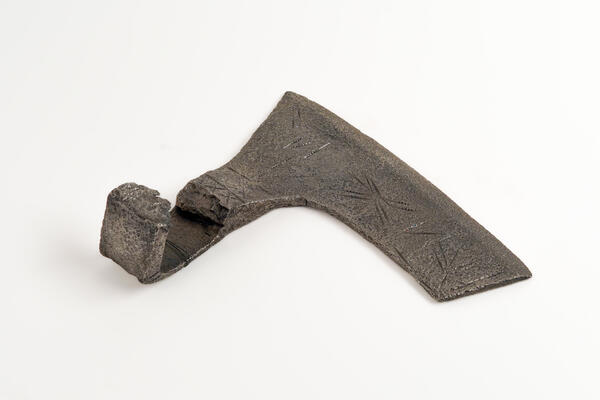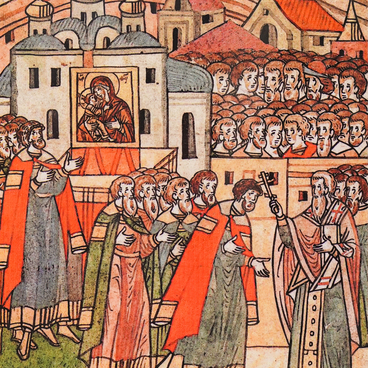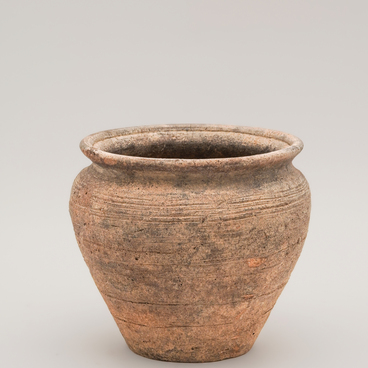A sekira is a cutting weapon, a type of battle axe. It is different from the axe by its crescent-shaped blade, sharpened along its convex part and up to 30 centimeters long. Most often, sekiras were made heavy, which made it possible to strike hard to penetrate through the armor. The difference between a sekira and an axe is the one of balance. The balance of a sekira provided the person with a fair amount of freedom of movement.
Forged sekiras consisted of a shaft, a blade and a butt. The shaft was an ordinary stick, sometimes coated to prevent the hands from slipping. The length of the shaft depended on the method of use: for infantry — up to 2.5 meters, for cavalry — up to 70-80 centimeters, for boarding operations — up to 3 meters. The blade was inserted into the eyelet and fastened to the shaft with nails or rivets. It was important to keep the blade close to the shaft. The distance from the shaft was important because the further it was, the heavier one side was than the other, the more the balance of the axe was affected, as the possibility of performing different fencing moves.
The use of “butterfly” sekiras showed that it was hard to strike with such an axe, the axe was very heavy and there was a large momentum when striking. There were also sekiras which had the blade that exceeded the length of the shaft and served as a counterweight to itself. The blade was often sharpened so that stabbing would be possible, although several types of sekiras had a special spike serving this purpose. There is often a slit between the blade and the spike or the blade and the shaft. It is used to grip the opponent’s blade, but only proficient warriors are able to do that. There is a hook on the ricasso of some types of axes. It was used for a variety of purposes, such as grasping the wall or the broadside of a ship, throwing a rider off a horse, and more.
Battle axes accompanied humanity for many centuries. At first, these polearms symbolized strength and power. With the development of metallurgy in the Middle Ages, the sekira became the common polearm favored by warriors. Even after firearms appeared, sekiras along with spades were still used on battlefields for a long time.
Forged sekiras consisted of a shaft, a blade and a butt. The shaft was an ordinary stick, sometimes coated to prevent the hands from slipping. The length of the shaft depended on the method of use: for infantry — up to 2.5 meters, for cavalry — up to 70-80 centimeters, for boarding operations — up to 3 meters. The blade was inserted into the eyelet and fastened to the shaft with nails or rivets. It was important to keep the blade close to the shaft. The distance from the shaft was important because the further it was, the heavier one side was than the other, the more the balance of the axe was affected, as the possibility of performing different fencing moves.
The use of “butterfly” sekiras showed that it was hard to strike with such an axe, the axe was very heavy and there was a large momentum when striking. There were also sekiras which had the blade that exceeded the length of the shaft and served as a counterweight to itself. The blade was often sharpened so that stabbing would be possible, although several types of sekiras had a special spike serving this purpose. There is often a slit between the blade and the spike or the blade and the shaft. It is used to grip the opponent’s blade, but only proficient warriors are able to do that. There is a hook on the ricasso of some types of axes. It was used for a variety of purposes, such as grasping the wall or the broadside of a ship, throwing a rider off a horse, and more.
Battle axes accompanied humanity for many centuries. At first, these polearms symbolized strength and power. With the development of metallurgy in the Middle Ages, the sekira became the common polearm favored by warriors. Even after firearms appeared, sekiras along with spades were still used on battlefields for a long time.






